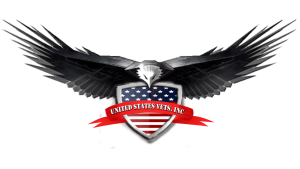Amidst a seasonal rush of job fairs in the region, many vets will be taking advantage of great opportunities to meet and impress potential employers  and businesses.
and businesses.
Veterans have plenty of forms and applications but one of the most important items to have in the file is your resume. Hey, that’s no surprise…but is it updated? It’s a competitive world out there, but you, THE VET, stand out among the crowd and your resume should reflect the same. Humility and pride can co-exist here, but before anything is developed into a magnificent resume, the foundation must be set. I have edited and consulted on numerous resumes in my career, and my peers concur that to have a successful resume, this checklist must be considered. It’s Resume 101, and never think you’re too smart not to look your resume over!
Cover letters – Do you really need them? You bet your buttons! It will dramatically increase your chances of getting on the short list of the potential employer. You don’t have to turn into Hemingway every time you need a cover letter. Write a template where you can add, dismiss, and present relative information that’s important to the position you’re applying for. The point is to communicate your attributes as a vet clearly and professionally. Double check the names of the recipients.
Top 10 Resume Items to check before you hit the “submit” button.
- You guessed it – Spelling. As a professional editor, do not, I repeat DO NOT, rely on Microsoft or Grammarly (or any other program) to catch the errors. They can catch the basic typos, but not everything. Reading, re-reading and proofreading can be a drag but it’s the only way to edit your work correctly. Have a friend or a colleague take a look at it before you send it. Don’t have an “awww shucks” moment after you send it in and see a typo.
- Proper Tense – If your accomplishment happened in the past, use the past tense. For something current, present tense. A flub on this level shows lack of proofreading and consistency. That’s one of the many reasons to re-read your resume. This type of error is a true recruiter turn-off.
- Clarity – It’s not a novel or the NY Times, it’s about you. Avoid needless embellishment with bells and whistles that distract the reader from your major accomplishments. When that hiring manager looks at your resume, they’ll see spot-on who you are and the job you’re gunning for without distraction.
- Font – Yes, looks matter in this case. Clean and consistent is the way to go. Pick out a font and STICK WITH IT. Don’t get fancy or clever. It won’t be appreciated. Your accomplishment will make you stand out, not a fancy font. Use the basics like Times Roman or Helvetica.
- The Thesaurus Flu – I remember one of the first essays I ever wrote. I wanted to impress the instructor to badly and thought if I used fancier words my essay would be fantastic. The instructor’s reply, “It looks like Roger’s Thesaurus threw up on your paper.” True story. The resume has a voice…yours, not Roget’s. A resume should be complimentary. And your successes and accomplishments will show in the text when the hiring manager reads all about you without the fluff or exaggeration.
- Format – Your best bet…PDF. It is almost the universal format and reduces the risks of a word document messing up the format you worked so hard to perfect. This one simple step will avoid a boat full of problems. Formatting can be a chore. Just take your time and you’ll appreciate the outcome and your prospective boss will as well. You’ve got an awesome resume, don’t lose it.
- Numbers Count – Certain details about your resume may require the use of numbers and percentages. Depending on your career, these numbers are important. It gives the employer a specific idea of a project, your role and the success of the project. It shows you’ve played an active and important part and how your actions had a positive impact.
- Name that File – Yes, there is a better way to name you resume file….and it’s not “Resume.pdf” or even “YourNameResume.pdf” Use the date (month and year). It makes it easier to find and an idea of when you wrote it (for future updates). For example: LMCloudenMay2017.pdf Simple, accurate and easy to find. That’s my kind of file!
- Readability – When you’re finished with your resume, read it. I know that sounds obvious, of course you’ll read it, but try reading it as if you’re the employer. If you were the employer, would you say, “I see a history, a skill (and how that skill was acquired), I see accomplishments that mean something.” That’s the reaction you want. Don’t torment the reader with a document that looks overblown and a chore to read. Overblown=Boring. Don’t be boring. This is an opportunity to tell the HR rep that you can communicate.
- Fact Check – The “skills” section is where most of the fibbing occurs. Just be honest and proud of your accomplishments. Worse case scenario? You said you could do something, and they find out you can’t. This situation can only lead to embarrassment and is very hard to recover from.
In conclusion, it boils down to common sense and honesty. A fine resume displays integrity and pride. Coupled with a military background, your resume can have outstanding results. Important skills that you are accustomed to and may seem ordinary can be new and enlightening and refreshing to a potential employer.
Are you a vet struggling with a resume? United States Vets Inc. has an “in-house” editor to help with resumes, CVs and cover letters. This is a free service to veterans.
For more information, contact Leslie at Lclouden7@gmail.com.
